Sewing Machine
The cloth tailoring industry introduced the effective benefits of the sewing machine in our life. Although business perspective got the highest priority to be concentrated it’s very useful to our personal life. A few pieces of examples are – stitching wedding dresses, blouses, pants, uniforms, etc. Every single part of it has different usage in a particular sewing task. So, complete knowledge of a single needle lock stitch machine should be the primary goal of a beginner. The basic Learning on its different parts will help to get – how to use it better and what are the procedures to fix wrong approaches happened at sewing time. needs to be done to fix it when something goes wrong. Because most of the first learners will be provided a single needle lock stitch machine for learning the tailoring. Machine management, handling, and stitching on a cloth piece. Here, every single part has been explained with relevant pictures and key outlines. This article is about Sewing Machine Parts and Functions with Pictures, Please have a look at the next.
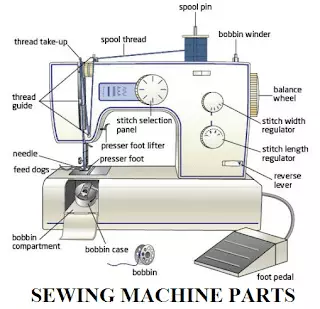
Industrial Sewing machine
A modern sewing industrial sewing machine is auto/ automatic with many advanced features. Industrial sewing machines are used in clothing factories to sew clothes, and modern auto Sewing machines are used in the Garments industry. A sewing machine is used to see fabrics to make clothes. From many references, I got to know the Sewing machine invented during the 1st industrial revolution, though that was the manual sewing machine. Modern Industrial sewing machines are designed in such a way that the fabrics guide easily to sew and make it out without hassle. Modern sewing machines are flexible to use with many automated processes of stitching which saves time and increases productivity and efficiency. Operating a Modern sewing machine is very easy because of its technical up-gradation over the years. Different types of sewing machines produce different types of stitch like lock stitch, overlock, zig-zag, blind stitch, and so on.
Parts of a sewing machine and Function with Pictures
Almost 21 parts of a sewing machine are significant in its usage. Here we are giving a sewing machine parts list and sewing machine parts picture for your easy understanding. This content is mainly all about sewing machine parts and their function. The sewing machine parts are described in the following key points:
- Needle
- Needle guard
- Needle bar
- Throat plate
- Slide plate
- Face-plate
- Feed dog
- Thread take-up lever
- Presser foot
- Presser foot lifter (by hand)
- Presser foot lifter by knee
- Tension spring
- Tension disc
- Stitch (SPI) regulator
- Backstitch lever
- Hand wheel
- Bobbin thread winder
- Bobbin
- Bobbin case
- Thread spool tray
- Needle thread guide
Spool Holder
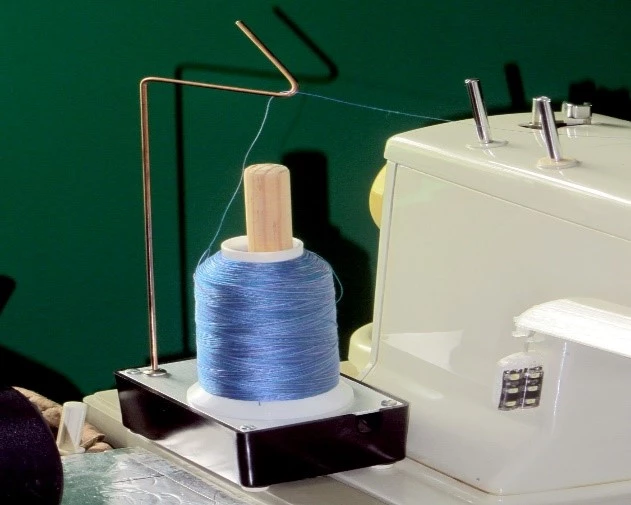
The ‘SPOOL’ is a rolling thing around thread/ wire, cable, or others. But in the sewing machine, the spool is rounded with thread especially. The role of a spool holder is to help the usage of a particular thread. It specially controls the direction/operation of the thread. During the sewing time, the spool holder constantly holds the spool so that the flow of thread can pass well. different kinds of Spool holders are horizontal or vertical direction. The sewing machine may have more than one spool holder when multitype embroidery or decorative stitch is needed. The spool pin holds the thread vertically. The spool pin keeps the spool in place while the thread feeds through the machine. Some machines also have horizontal spool pins.
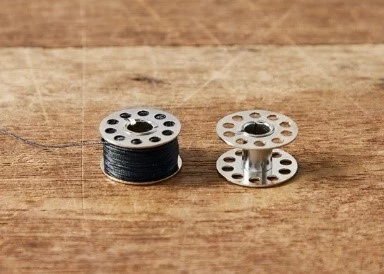
Bobbin
The bobbin is rolled up with the required color thread. It’s very small rolling parts of sewing. The bobbin is also called a small spindle to roll up thread. It supplies thread toward the lower layer of the sewing machine. It helps well stitch formation. The bobbin cover is a plate or hinged door that protects the bobbin mechanism. The bobbin cover is used to keep the bobbin on it, when need bobbin replacement the bobbin is open, and we can clean the case or bobbin area at that time.
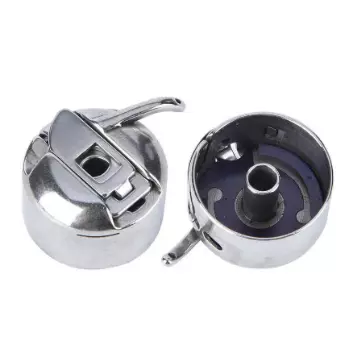
Bobbin Case
The bobbin case holds a thread-rolled bobbin during sewing time. The next pictures have shown the bobbin case hook which holds rolled-up treads constantly so that thread can pass smoothly. A needle loop is previously produced. Bobbin rounds inside the bobbin case when stitching is ongoing. Bobbin case keeps the balance of thread passing through its well round structure. This is how a stitch is generated by the interlacing of needle thread and bobbin thread.
The use of a bobbin case
The following picture description will make a clear understanding of usage. Bobbin’s case has various small pieces of parts. All parts have a separate role to pass the thread well from the bobbin case.
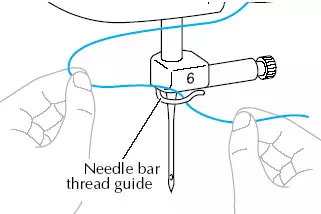
Thread Guide
The thread guide keeps the straight track of the thread. It controls the direction of the thread. The thread guide holds plenty of thread supply. It provides support to press thread into the sewing. After that, the upper thread combines with the lower thread on the bobbin case. Thread guides may be hoops, discs, or flat metal shapes that pinch or direct the thread to feed it through the machine without tangling and at the correct tension.
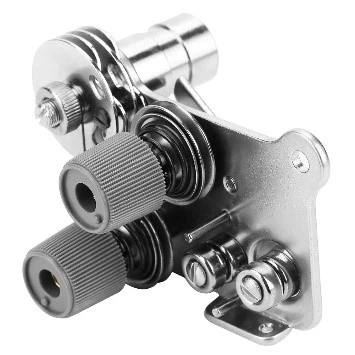
Tension Regulator
Like the Thread guide, the tension regulator also provides the balance passing of thread into the sewing. But it usually controls the looseness or tightness of the upper thread. It helps to reduce the puckering problem. The thread of tension regulators passes thread to the threat guide and then into the sewing.
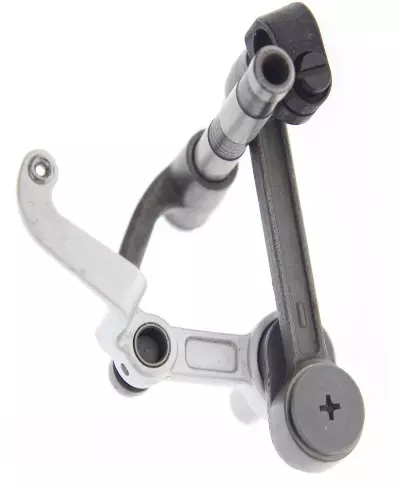
Thread Take Up Lever
This part is interlinked with the tension regulator and thread guide, To pull the thread on up and down to feed the thread when the sewing machine is running. The thread takes up Lever is set on the middle option of these two parts. The thread take-up lever keeps the thread straight and brings it into the sewing needle. This is how it manages the proper tension. If the thread take-up lever is set incorrectly, the thread will be broken, knot up, and create a sewing jam in the machine.
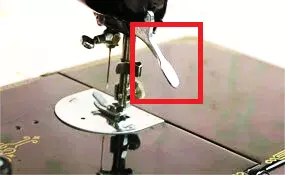
Pressure Bar Lifter
Pressure-bar lifter helps to raise and lower the pressure foot. Through this feature, the machine operator may take help to set cloths under the pressure foot. Bar lifter is raised for setting cloths and down pressed down during ongoing sewing task.
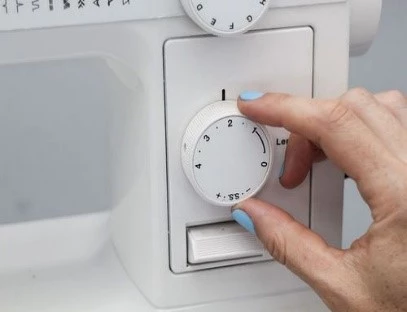
Stitch Length Regulator
This part helps to raise and down the length of the stitch. The main function is to regulate the quantity of sewing stitch. Because Stitch lengths vary for different fabric types. The sewing pattern also depends on the fabric type. Adjust the speed with sewing motion, and balance speed. A stitch length regulator is a computerized command to secure stitching.
Balance Wheel
This part actually continues the sewing task. It raises and down the needle when needed. The whole process is like manual labor. It is mostly used for sewing thick pieces of cloth. It adjusts to wind the ongoing sewing thread into the bobbin. This benefit is also applicable to domestic sewing machines. It is placed on the right side of the sewing machine.
Slide Plate
It works as the cover of the bobbin case. Its shape is rectangular and is placed near the pressure foot. The machine operator can set the bobbin case by opening the slide plate. After that, it will be closed before starting the stitch. Besides, it helps the removal of the bobbin case without raising/ lifting the machine.
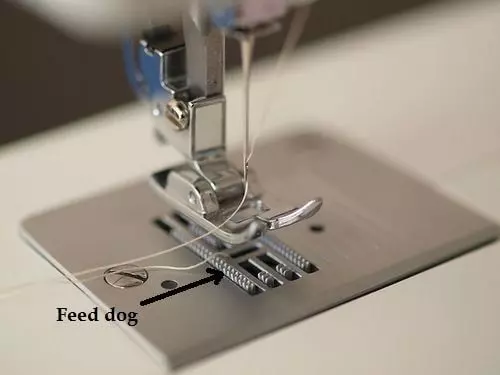
Feed Dog
This machine part usually helps to pass sewing cloth through continuous sewing activity. To do these well, this part connects bobbin thread and spool thread. It passes the cloth on the opposite side of the operator and forwards direction during the sewing. The feed dog is a toothed metal piece below the stitch plate that moves up and down to push the fabric along, beneath the needle. Stitch length is controlled by how much fabric the feed dog moves.
Needle
With the help of a feed dog, needle bar, and spool holder, the main function of a needle is to generate the stitch mixing with the bobbin thread. It works on the stitch during sewing the cloth. The needle bar holds the needle straight so that the sewing process won’t miss the target of the sewing place.
Needle Bar
The function of a needle bar is to hold the needle so that the sewing process can pass smoothly. It usually places the needle within a constant framework. It looks like a long cylinder. Without proper placement of a needle, the position may be too high or low. This wrong placement may turn the sewing process into an undesired place. Besides, needles can be broken.
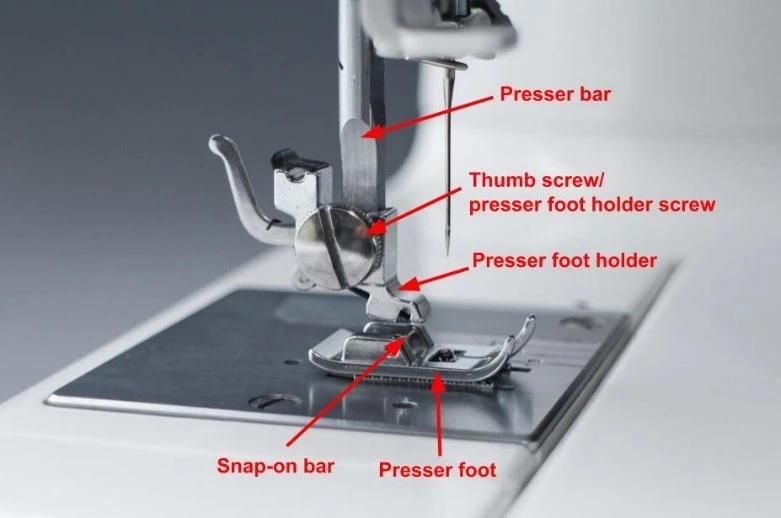
Pressure Foot
It holds the cloth by pressing with the slide plate so that the sewing process may overcome the target. It creates pressure on a particular fabric during sewing. It keeps the cloth straight and prevents wrinkles which can damage or mess up the stitch. The pressure foot is an important part of the sewing machine. The Pressure foot moves with the feed dog to move fabric evenly through the machine. Presser foot pressure control adjusts is the amount of pressure the presser foot applies to the fabric as it feeds beneath the needle. It increases the pressure when sewing heavy fabric and decreases pressure when sewing lightweight or thin fabric.
Power Switch
The power switch is used to circulate electricity into the machine. sometimes, it may use manual and electrical sewing machines. Normally Power switch is on the right side of the machine. Through using electrical power and manual setup, this switch usually turns on or off the machine. Few modern sewing machines are operated with light support so that sewing time may be flexible ad comfortable for the operator.
Foot Pedal
Foot Pedal keeps the speed of the sewing process through balanced process. The rules are to press the pedal more and get a faster sewing time. this part of the sewing machine is operated on foot. The foot is known also as foot control; use to control machine speed regulator and stitching control. After switching on the machine, the foot pedal controls control stitching and finish.
Back Sew Button
Button Sewing parts on a machine is holding the button when the machine is sewing a stitch. On the back sews a button is operated for restitching a short area to enhance the seam strength.
Bobbin Winder
It helps to wind the sewing thread to the bobbin. A bobbin winder is where a bobbin keeps, set on top of a sewing machine. Built-in bobbin winders can be found on the top, front, or even inside of a sewing machine, most machines have them at the top. We found most bobbin winders consist of a bobbin pin/winder to hold the bobbin while the thread is being wound, thread guides for maintaining tension, and a start/stop lever. Some bobbin winders have built-in thread cutters. A bobbin is placed here during winding as it is called a bobbin winder.
Throat plate
A Throat plate is a metal part on the opposite side of the Slide Plate. Every Sewing machine has a throat plate beneath a sewing needle and presser foot. It is tightening the position with multiple screws so that a needle may help constantly to sew the cloth and pass away. It moves up and down to stitch the fabric.
Faceplate
The face plate is also a metal part of the sewing machine. It usually covers the front part like – the presser bar, the needle bar, and the take-up lever. It keeps internal parts away from dust and force.
Tension spring
This part attaches to the Face Plate of sewing machines. It controls the range of tightness of the thread when it passes. The function of controlling is continued by a spring. The spring takes support from two or three tension plates/ Tension Disks. The thread sets in between tension plates and the spring force these plates altogether.
Tension disc
The tension Disk is set before the tension spring for controlling the thread. Because thread passes in between two tension plates/ disk which is pushed by a spring.
Stitch (SPI) regulator
Stich regulators specify the range of stick when it’s sewing. It’s also called the SPI which means Stitches Per Inch. Often, it’s also called Stitch Per Centimeter (SPC) through the Metric System. During the sewing moment, the operator will round on the regulator switch and select the range of thread sewing.
Hand wheel
The hand wheel makes controls the needle and takes up the lever by helping these moving. This part may be controlled by a power switch or hand. The hand wheel/ power wheel will always turn toward the operator. A Sewing machine operator use handwheel to adjust needle height by turning it.
Thread spool tray
This is a large or medium tray with many spools’ holders. Sometimes, it’s like a box. The spool holders hold multiple spools of thread. Spool holders may be of different sizes and shapes. These holders will help to use many colors’ threads at a time. these spools may be larger than the machine size. The spool cap slips onto the end of the spool pin and holds the spool in place. Spool CAP is used to keep the spool in place when the sewing machine running.
Thread cutter
A thread cutter is used to remove the stitched piece from the machine, and to use the cutter, raise the presser foot. Most sewing machine has a thread cutter as their cutter blade in the needle area.
- You may love to read:
- Uses of Sewing Machines in the Apparel industry
- Different types of sewing machines used in the Apparel industry
- 12 Best Sewing Machine Brands Around the World
